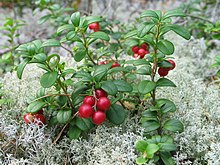Vanillylacetone
| Structural formula | |||||||||||||||||||
|---|---|---|---|---|---|---|---|---|---|---|---|---|---|---|---|---|---|---|---|

|
|||||||||||||||||||
| General | |||||||||||||||||||
| Surname | Vanillylacetone | ||||||||||||||||||
| other names | |||||||||||||||||||
| Molecular formula | C 11 H 14 O 3 | ||||||||||||||||||
| Brief description |
colorless solid |
||||||||||||||||||
| External identifiers / databases | |||||||||||||||||||
|
|||||||||||||||||||
| properties | |||||||||||||||||||
| Molar mass | 194.23 g mol −1 | ||||||||||||||||||
| Physical state |
firmly |
||||||||||||||||||
| density |
1.14 g cm −3 (25 ° C) |
||||||||||||||||||
| Melting point |
40-41 ° C |
||||||||||||||||||
| boiling point |
141 ° C (0.7 hPa) |
||||||||||||||||||
| solubility |
|
||||||||||||||||||
| Refractive index |
1.541 (20 ° C) |
||||||||||||||||||
| safety instructions | |||||||||||||||||||
|
|||||||||||||||||||
| Toxicological data | |||||||||||||||||||
| As far as possible and customary, SI units are used. Unless otherwise noted, the data given apply to standard conditions . Refractive index: Na-D line , 20 ° C | |||||||||||||||||||
Vanillylacetone is a chemical compound from the group of ketones .
Occurrence
Vanillylaceton occurs naturally in cranberries and ginger before. The compound was first isolated from ginger in 1917 by the Japanese chemist Hiroshi Nomura . It is the hot substance in ginger oleoresin .
Extraction and presentation
Vanillylaceton 4 can be achieved by aldol condensation of vanillin 1 and acetone 2 to 4- (4-hydroxy-3-methoxyphenyl) -3-buten-2-one 3 and subsequent catalytic hydrogenation be obtained.
The compound is also formed from gingerol through a retroaldol reaction.
properties
Vanillylacetone is a colorless solid with a pungent taste that is sparingly soluble in water. Vanillylacetone is one of the most important flavor components of ginger. It is a pharmacologically active ingredient that can contribute to the anti-inflammatory, antioxidant, anti-cancer, radioprotective, and antimicrobial properties of ginger.
use
Vanillylacetone is used as a flavoring agent.
Individual evidence
- ^ Entry on FEMA 3124 in the database of the Flavor and Extract Manufacturers Association of the United States .
- ↑ Entry on ZINGERONE in the CosIng database of the EU Commission, accessed on July 10, 2020.
- ↑ a b Data sheet 4- (4-Hydroxy-3-methoxyphenyl) -2-butanone, 97% from AlfaAesar, accessed on March 8, 2019 ( PDF )(JavaScript required) .
- ↑ a b c d e f g h i j k data sheet Vanillylaceton, ≥96%, FG at Sigma-Aldrich , accessed on March 8, 2019 ( PDF ).
- ↑ a b c d Entry on Zingeron. In: Römpp Online . Georg Thieme Verlag, accessed on March 8, 2019.
- ↑ Hiroshi Nomura: LXIV. — The pungent principles of ginger. Part I. A new ketone, zingerone (4-hydroxy-3-methoxyphenylethyl methyl ketone) occurring in ginger. In: J. Chem. Soc., Trans. 111, 1917, pp. 769-776, doi : 10.1039 / CT9171100769 .
- ↑ External identifiers of or database links to 4- (4-Hydroxy-3-methoxyphenyl) -3-buten-2-one : CAS number: 1080-12-2, PubChem : 5354238 , ChemSpider : 4510464 , Wikidata : Q81989495 .
- ↑ a b Entry on Vanillylacetone in the Hazardous Substances Data Bank , accessed March 8, 2019.
- ↑ R. Hansel, O. Sticher, E. Steinegger: Pharmakognosie - Phytopharmazie . Springer-Verlag, 2013, ISBN 978-3-662-09269-9 , pp. 658 ( limited preview in Google Book search).
- ↑ Bilal Ahmad, Muneeb U. Rehman et al. a .: A Review on Pharmacological Properties of Zingerone (4- (4-Hydroxy-3-methoxyphenyl) -2-butanone). In: The Scientific World Journal . 2015, 2015, p. 1, doi : 10.1155 / 2015/816364 .

